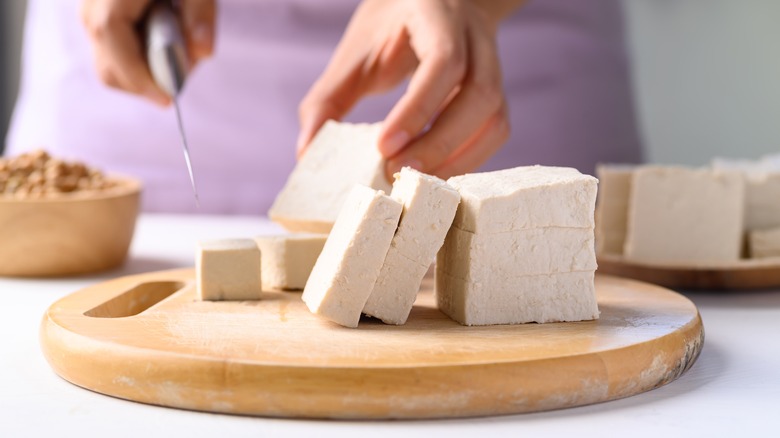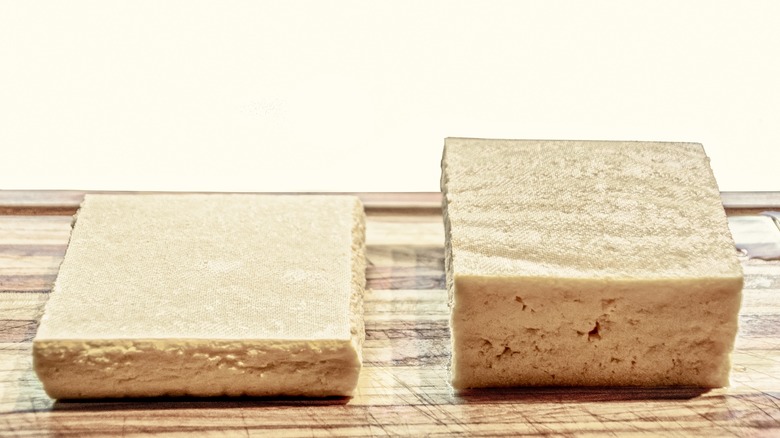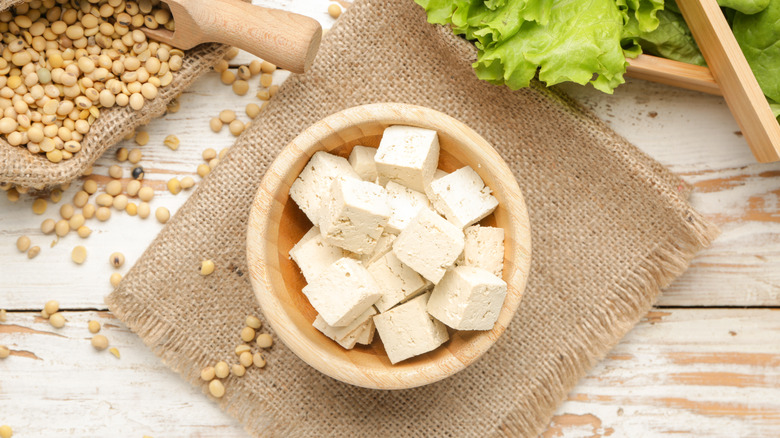Should You Cut Your Tofu Before Pressing It?
Tofu has exploded in popularity over the last decade. The plant-based protein, which is actually processed soybean curd, has been around for centuries, but movements toward vegetarian, vegan, and plant-based diets have spurred a rise in popularity in recent years.
Now, it is not uncommon to see tofu as a star ingredient and protein source in recipes or as a vegetarian option on restaurant menus. It is also relatively easy to find various different types of tofu in the refrigerated sections of grocery stores.
Relatively tasteless on its own, tofu is known for taking on the flavor of the seasoning or marinade in which it is cooked. It can also be notoriously difficult to get the texture and flavor of tofu right, which is why many recipes include extra, lengthy steps like pressing, tearing, or marinading to help achieve the desired outcome. One strategy that may be worth trying is cutting tofu and then pressing it.
The effect of cutting and pressing tofu
Pressing is one of the most common methods for preparing tofu that removes excess moisture. It involves draining the tofu, sandwiching it between paper towels or dish towels, weighing it down, and letting it sit for 30 minutes or so before marinating or cooking. Usually, the pressing method is reserved for a firm or extra-firm tofu, according to Food Network, while softer types like silken tofu would not be able to stand up to the pressure.
While many recipes direct the reader to press tofu and then cut it afterward, food writer and cookbook author Andrea Nguyen advises cutting it first and then pressing it, via Food & Wine. Nguyen suggests cutting the tofu into the shape and size of a playing card with half an inch of thickness. She also recommends a more lengthy process for preparing tofu: pressing it for three to four hours, then simmering it on the stove, marinating overnight, draining it, and then baking. Cutting the tofu before pressing should help it hold its shape during the simmering and marinating steps.
Nguyen calls it a Chinese style of baked tofu that is can be great in salads, sandwiches, and more, via Food & Wine. It could also work well cut up in a tofu stir fry.
Does cutting and pressing work for all tofu recipes?
You probably shouldn't use the cutting and pressing technique all of the time. Pressing specifically is usually recommended for recipes requiring you to start with dense, dry tofu. Recipe developer Tejal Rao, via The New York Times, advises pressing for dishes where you are aiming to achieve a crispy, caramelized exterior by broiling or sautéing, or for dishes where excess moisture could impact browning, like a tofu scramble. The method wouldn't be necessary for recipes with more delicate types of tofu, or for dishes like a stew, where moisture content doesn't really matter.
Some chefs and food writers do not recommend the pressing method at all, including Joe Yonan, food and dining editor of The Washington Post. "In my experience, those marinades don't ever penetrate all that well, even when the tofu is pressed," Yonan writes in an article about pressing tofu. As an alternative, he suggests a quicker method for expelling moisture: wrapping the tofu in paper towels and microwaving it for about a minute.


